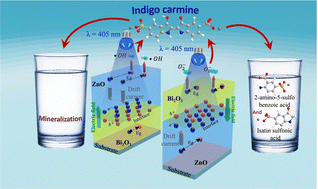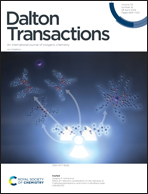Strong thickness dependence in thin film photocatalytic heterojunctions: the ZnO–Bi2O3 case study†
Abstract
Semiconductor heterojunctions are an effective way to achieve efficient photocatalysts, as they can provide an adequate redox potential with visible light excitation. Several works have reported synergistic effects with nanoparticle semiconductor materials. The question is still open for thin film heterojunctions formed by stacked layers, as photocatalysis is considered a surface phenomenon. To investigate if the internal layer really affects or modifies the photocatalytic properties of the external material, we analyze the thin film heterojunction with ZnO and Bi2O3 semiconductors deposited by spray pyrolysis in two configurations: substrate/ZnO/Bi2O3 and substrate/Bi2O3/ZnO. Microstructural analysis was performed to verify the formation of the physical junction of the materials and discard new ternary phases. The photocatalytic activity was analyzed as a function of the thickness of the layers under blue light irradiation. We determined the conduction and valence bands positions, the carrier concentrations, mobilities, Fermi levels, etc. that allowed us to distinguish two reaction mechanisms depending on the configuration. There is a strong compromise between the order and thickness of the layers with the photocatalytic activity. The internal electric field produced in the interface defines the route of the photogenerated charges, and therefore the photocatalytic response. Thus, well-designed thin film heterojunctions can indeed improve the photocatalytic activity of the surface layer.



 Please wait while we load your content...
Please wait while we load your content...